Delphia 31 Centerboard (Trunk)
Sailboat specifications
The Delphia 31 is a 31’1” (9.48m) cruising sailboat designed by Andrzej Skrzat (Poland). She was built between 2012 and 2017 by Delphia Yachts (Poland). The Centerboard (Trunk) version grants a minimal draft when the centerboard is lifted allowing beaching and easy access to shallow areas.
The Delphia 31 is as well listed, on Boat-Specs.com, in Deep draft and Keel and centerboard version (see all the versions compared).
The Delphia 31 is as well listed, on Boat-Specs.com, in Deep draft and Keel and centerboard version (see all the versions compared).
Delphia 31's main features
- Model
- Delphia 31
- Version
- Centerboard (Trunk)
- Hull type
- Monohull
- Category
- Cruising sailboat
- Sailboat builder
- Sailboat designer
- Country
- Poland
- Construction
- GRP (glass reinforced polyester):
- Hull: Single skin fiberglass polyester
- Deck: Sandwich fiberglass polyester - First built hull
- 2012
- Last built hull
- 2017
- Appendages
- Centerboard : pivoting centerboard
- Helm
- Single helm wheel
- Rudder
- Single spade rudder
- Unsinkable
- No
- Trailerable
- No
- EC design categoryiThe CE design category indicates the ability to cope with certain weather conditions (the sailboat is designed for these conditions)
A: Wind < force 9, Waves < 10m
B: Wind < force 8, Waves < 8m
C: Wind < force 6, Waves < 4m
D: Wind < force 4, Waves < 0,5m - B
- Standard public price ex. VAT (indicative only)
- About71 500 €(2016)
Delphia 31's main dimensions
- Overall length
- 32’ 4”9.85 m
- Hull length
- 31’ 1”9.48 m
- Beam (width)
- 11’ 2”3.4 m
- Draft
- 5’ 5”1.65 m
- Draft when appendages up
- 1’ 6”0.45 m
- Mast height from DWL
- 45’ 6”13.87 m
- Light displacement (MLC)
- 11464 lb5200 kg
- Ballast weight
- 3638 lb1650 kg
Delphia 31's rig and sails
- Upwind sail area
- 488 ft²45.35 m²
- Downwind sail area
- 1216 ft²113 m²
- Mainsail area
- 248 ft²23 m²
- Solent area
- 241 ft²22.35 m²
- Asymmetric spinnaker area
- 969 ft²90 m²
- Rigging type
- Sloop Marconi 9/10
- Mast configuration
- Deck stepped mast
- Rotating spars
- No
- Number of levels of spreaders
- 1
- Spreaders angle
- Swept-back
- Spars construction
- Aluminum spars
- Standing rigging
- Continuous
Delphia 31's performances
- Upwind sail area to displacementiThe ratio sail area to displacement is obtained by dividing the sail area by the boat's displaced volume to the power two-thirds.
The ratio sail area to displacement can be used to compare the relative sail plan of different sailboats no matter what their size.
Upwind: under 18 the ratio indicates a cruise oriented sailboat with limited performances especially in light wind, while over 25 it indicates a fast sailboat. - 163 ft²/T15.11 m²/T
- Downwind sail area to displacementiThe ratio sail area to displacement is obtained by dividing the sail area by the boat's displaced volume to the power two-thirds.
The ratio sail area to displacement can be used to compare the relative sail plan of different sailboats no matter what their size. - 405 ft²/T37.65 m²/T
- Ballast ratioiThe Ballast ratio is an indicator of stability; it is obtained by dividing the boat's displacement by the mass of the ballast. Since the stability depends also of the hull shapes and the position of the center of gravity, only the boats with similar ballast arrangements and hull shapes should be compared.
The higher the ballast ratio is, the greater is the stability. - 32 %
Delphia 31's auxiliary engine
- Engine(s)
- 1 inboard engine
- Engine(s) power (min./max.)
- 18 HP / 30 HP
- Fuel type
- Diesel
- Fuel tank capacity
- 26.4 gal100 liters
Delphia 31's accommodations and layout
- Cockpit
- Open aft cockpit
- Cabin(s)
- 2
- Berth(s) (min./max.)
- 6 / 7
- Head(s)
- 1
- Freshwater tank capacity
- 39.6 gal150 liters
- Holding tank capacity
- 12.4 gal47 liters


Delphia Yachts Delphia 31 - - 1/15
Picture extracted from the commercial documentation © Delphia Yachts
Picture extracted from the commercial documentation © Delphia Yachts
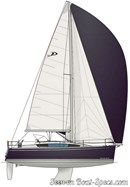

Delphia Yachts Delphia 31 sailplan - - 2/15
Picture extracted from the commercial documentation © Delphia Yachts
Picture extracted from the commercial documentation © Delphia Yachts
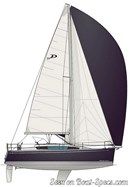

Delphia Yachts Delphia 31 sailplan - - 3/15
Picture extracted from the commercial documentation © Delphia Yachts
Picture extracted from the commercial documentation © Delphia Yachts
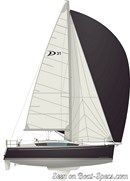

Delphia Yachts Delphia 31 sailplan - - 4/15
Picture extracted from the commercial documentation © Delphia Yachts
Picture extracted from the commercial documentation © Delphia Yachts


Delphia Yachts Delphia 31 layout - - 5/15
Picture extracted from the commercial documentation © Delphia Yachts
Picture extracted from the commercial documentation © Delphia Yachts


Delphia Yachts Delphia 31 layout - - 6/15
Picture extracted from the commercial documentation © Delphia Yachts
Picture extracted from the commercial documentation © Delphia Yachts


Delphia Yachts Delphia 31 layout - - 7/15
Picture extracted from the commercial documentation © Delphia Yachts
Picture extracted from the commercial documentation © Delphia Yachts


Delphia Yachts Delphia 31 sailing - - 8/15
Picture extracted from the commercial documentation © Delphia Yachts
Picture extracted from the commercial documentation © Delphia Yachts


Delphia Yachts Delphia 31 sailing - - 9/15
Picture extracted from the commercial documentation © Delphia Yachts
Picture extracted from the commercial documentation © Delphia Yachts
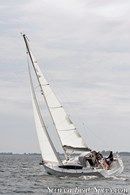

Delphia Yachts Delphia 31 sailing - - 10/15
Picture extracted from the commercial documentation © Delphia Yachts
Picture extracted from the commercial documentation © Delphia Yachts


Delphia Yachts Delphia 31 cockpit - - 11/15
Picture extracted from the commercial documentation © Delphia Yachts
Picture extracted from the commercial documentation © Delphia Yachts


Delphia Yachts Delphia 31 interior and accommodations - - 12/15
Picture extracted from the commercial documentation © Delphia Yachts
Picture extracted from the commercial documentation © Delphia Yachts


Delphia Yachts Delphia 31 interior and accommodations - - 13/15
Picture extracted from the commercial documentation © Delphia Yachts
Picture extracted from the commercial documentation © Delphia Yachts


Delphia Yachts Delphia 31 interior and accommodations - - 14/15
Picture extracted from the commercial documentation © Delphia Yachts
Picture extracted from the commercial documentation © Delphia Yachts
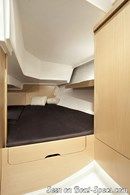

Delphia Yachts Delphia 31 interior and accommodations - - 15/15
Picture extracted from the commercial documentation © Delphia Yachts
Picture extracted from the commercial documentation © Delphia Yachts
Similar sailboats that may interest you:
Sailboats
First built hull
Hull length
2009
31’ 4”9.55 m
1984
38’ 1”11.62 m
1978
26’ 1”7.95 m
1977
38’11.57 m
1987
31’ 4”9.55 m
1979
30’ 11”9.42 m
2017
32’9.75 m
2015
29’8.83 m
2015
32’ 8”9.98 m
2017
31’9.44 m
1984
24’ 11”7.6 m
2007
25’ 7”7.79 m
2012
31’ 1”9.48 m
2014
32’ 7”9.95 m
1987
31’ 4”9.55 m